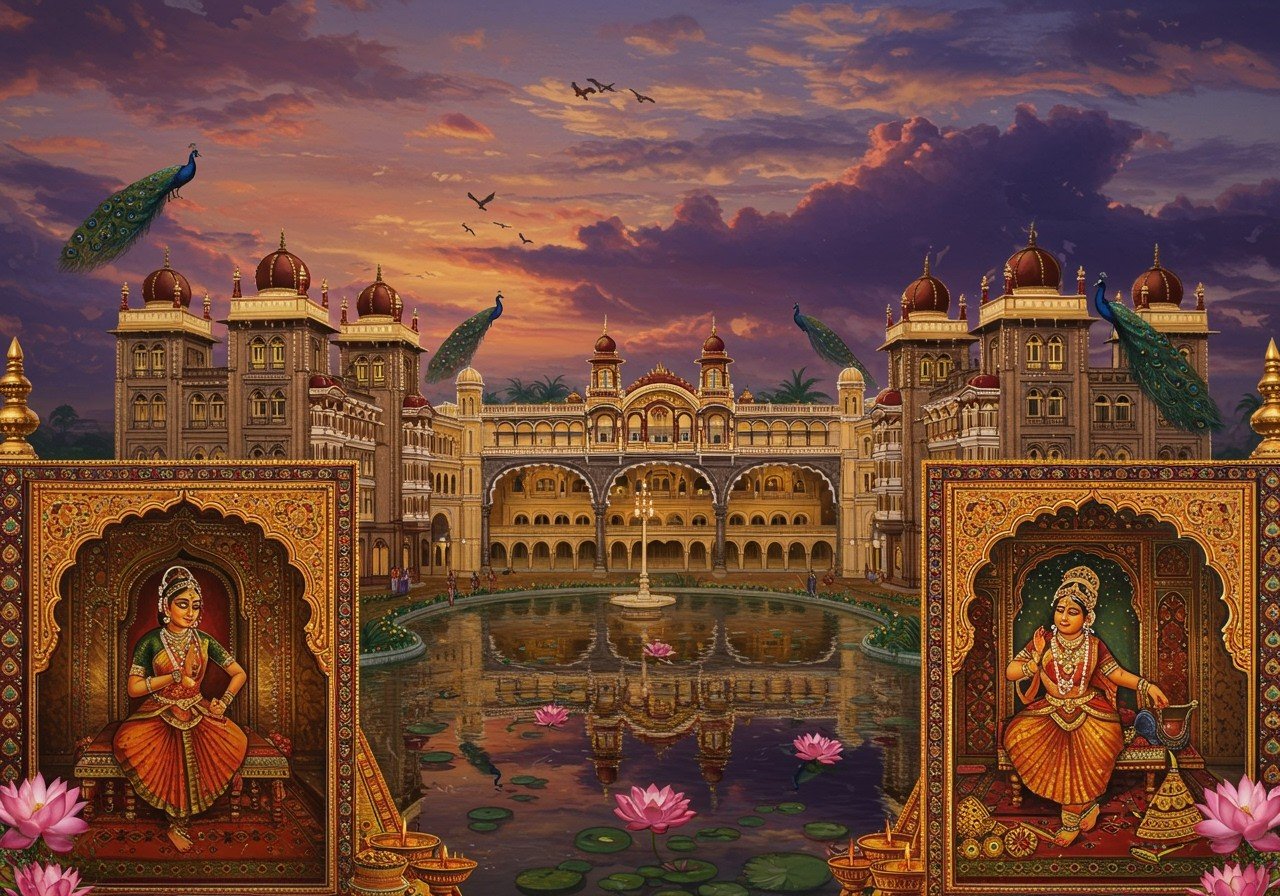
The Mysore Kingdom, a realm steeped in rich cultural heritage, has profoundly influenced Indian traditions. Known for its historical significance, dynastic rule, and enduring cultural elements, exploring its legacy is ideal for those who appreciate tradition. For those seeking authentic ritual items, the convenience of online shopping enhances this exploration.
Historical Background
Established in 1399 by the Wadiyar dynasty, the Mysore Kingdom witnessed significant periods under rulers like Chikka Devaraja Wadiyar and Tipu Sultan. Its strategic location in southern India fostered trade and cultural exchange. Political alliances and conflicts, notably with the British East India Company, shaped its cultural landscape.
The Kingdom of Mysore Flag
The Kingdom of Mysore’s flag, recognized for its distinctive design and colors, evolved under Tipu Sultan. The incorporated motifs and colors carry cultural and religious symbolism. Today, the flag, representing the kingdom’s rich heritage, continues to be displayed during festivals and official ceremonies.
The Kingdom of Mysore Map
Throughout history, the Mysore Kingdom encompassed substantial territory, including Mysore, Srirangapatna, and Bangalore. The kingdom’s natural features—rivers, mountains, and forests—influenced its culture and economy. Its strategic location facilitated trade routes and cultural exchange with other regions.
Religion and Spirituality
Hinduism, Islam, and Jainism were prominent religions within the Mysore Kingdom, shaping its culture, art, architecture, and festivals. Prominent religious sites like the Chamundeshwari Temple and Jama Masjid thrived under the patronage of the Wadiyar kings, enriching the kingdom’s spiritual and cultural life.
You can find puja items related to these religions and others at poojn.in, India’s largest store for cultural goods and services.
Art and Architecture
The Mysore Kingdom is renowned for its distinctive art and architecture, influenced by the Vijayanagara and Hoysala empires. Architectural marvels like Mysore Palace, Srirangapatna Fort, and Lalitha Mahal stand as testaments to its artistic achievements. The kingdom also nurtured classical music, dance, and painting, particularly the Mysore painting style.
Cultural Traditions and Festivals
The Mysore Kingdom’s cultural calendar is vibrant with festivals such as Dasara, Ugadi, and Makar Sankranti. These festivals, involving traditional customs, rituals, and performances like the renowned Mysore Dasara procession, were actively promoted and preserved by the Wadiyar dynasty. These festivals are a great opportunity to connect with your spiritual side. You can purchase items related to these festivals from poojn.in.
Conclusion
The Mysore Kingdom’s legacy stands as a testament to India’s enduring cultural heritage. Its rich history, vibrant traditions, and contributions to art and architecture continue to inspire. Exploring the Mysore Kingdom honors the past and keeps its traditions alive. Poojn.in offers a convenient platform to access authentic ritual items, ensuring that the kingdom’s cultural essence remains a part of our lives today.
Frequently Asked Questions
What distinguished the Kingdom of Mysore’s flag? The Kingdom of Mysore’s flag featured a royal yellow backdrop adorned with traditional symbols, including the mythical two-headed eagle, Gandaberunda, representing the kingdom’s heritage.
Where can I find a map of the Kingdom of Mysore? Historical books, archives, online resources, and library collections often contain detailed maps illustrating the kingdom’s boundaries during various periods.
Which religion held prominence in the Kingdom of Mysore? Hinduism was the predominant religion, although the kingdom embraced diversity by supporting other faiths like Islam and Jainism.
Who ruled the Kingdom of Mysore? The Wodeyar dynasty reigned for centuries, with figures like Hyder Ali and Tipu Sultan also playing key roles in its history.
What defines the cultural legacy of the Kingdom of Mysore? The kingdom’s rich cultural legacy encompasses traditional music, dance, art, architecture, and culinary delights like Mysore Masala Dosa, with the Mysore Palace serving as a prominent symbol.
What is the Kingdom of Mysore’s contribution to Indian history? The kingdom’s resistance against British colonial forces and its influence on southern India’s cultural landscape mark its significant contributions to Indian history. Festivals like Dasara and Karagga showcase the historical and cultural richness of Mysore.
Are there festivals associated with the Kingdom of Mysore? Yes, the Dasara festival is closely linked to the Kingdom of Mysore, celebrated with grandeur to showcase its cultural heritage.
What is the significance of the Gandaberunda symbol on the Kingdom of Mysore flag? The Gandaberunda, a mythical two-headed eagle, symbolizes strength and resilience, representing the kingdom’s power and prestige.
Where can I buy authentic puja items related to Mysore’s rich cultural heritage? Poojn.in offers a wide selection of genuine puja items, including pure silk vastras, kumkum, chandana, brass and silver puja items, and traditional oil lamps, perfect for observing Mysore’s traditions.
Enhance your spiritual journey with traditional Mysore-style puja items and Dasara festival essentials from Poojn.in. We offer a wide range of products, from pure silk vastras and dhotis for temple rituals to authentic kumkum and chandana from Karnataka. Prepare for Navaratri celebrations with complete puja sets, special offerings for Chamundeshwari Devi, and traditional decorative items for golu display. Find pure camphor, sambrani, traditional oil lamps (deepa), and authentic flowers and garlands for deity worship. Explore our collection of special puja thalis with traditional designs, pure silver items for ceremonial worship, and customary offerings used in palace rituals. With Poojn.in, you can ensure quality, authenticity, and proper packaging of all items, delivered pan-India.


